You’ve probably already read tons of project management articles—the how-tos, 101s, and comprehensive guides; but what’s often overlooked in project management is the importance of resource management. So let’s zoom into the world of resource management and how it’ll help you grow a successful project portfolio.
This article will explain what it is, why it’s important, what a resource manager does, and how you can take control of resource management planning using the staging-mondaycomblog.kinsta.cloud Work OS.
What is resource management?
Resource management involves planning, scheduling, and allocating resources such as people, skills, money, or tools in preparation for an upcoming project. The goal is to manage your resources appropriately to deliver value to your business.
Typically, project managers divide available resources into two distinct categories:
- Tangible resources are anything that you can see or touch. This could include labor, machinery, property, software, or money. (In which case you may want to learn about project cost management.)
- Intangible resources are more abstract. An intangible resource might be intellectual property (like a technology patent), an idea, or a particular set of skills required to get the job done.
Why is resource management important?
Resource management is important because it enables you to complete more tasks with fewer resources. By planning and assessing precisely what you need to complete a task, you’re using a waste-free approach to projects that increases efficiency and allows you to reuse and recycle resources as needed.
To imagine a real-world example of how you’d use resource management, let’s say you’re planning to serve food at a large event you’re hosting. You wouldn’t just close your eyes and pick a random number of dishes, right? Instead, you’d:
- Count how many guests are coming
- Determine portion sizes
- Budget for emergency food if your guest numbers are out
Planning your resources in this way ensures you don’t end up with uneaten food at the end of your event. You’ll reduce waste and keep a handle on your budget. That’s resource management in action. It saves your team time, money, and hassle.
What is a resource manager?
A resource manager is a lot like a project manager with one key difference:
- Project managers focus on creating and assigning tasks to get a job done
- Resource managers are responsible for allocating the resources required to complete those tasks
If you’ve got a small team, your project manager and resource manager might be the same person. But bear in mind that these are two totally different hats for someone to wear.
What are different types of resource management?
There are four main types of resource management: resource allocation, resource leveling, resource smoothing, and resource forecasting.
1. Resource allocation
Resource allocation is all about getting the most from your available resources. This means assessing all the resources at your disposal, analyzing how they can be used efficiently, and then deploying those resources to help your team get to work.
2. Resource leveling
Resource leveling is a method managers use to uncover underused or misallocated resources and then redeploy them to optimize efficiency. In terms of stock, this would mean ensuring you have neither a shortage nor an excess of your inventory. Similarly, you might extend a project’s timeline to level out the overall costs; for example, if you need to wait for cost-effective materials to be available.
3. Resource smoothing
Resource smoothing aims to ensure resources are spread out as evenly as possible over time. When done well, project managers will still meet project deadlines and objectives, while minimizing fluctuations caused by resource overloading or underutilization. This technique involves modifying the start and finish dates of activities within a project to avoid peaks and valleys.
4. Resource forecasting
Resource forecasting (capacity planning) predicts resource requirements in the future. This is a critical part of resource planning, as accurate forecasting means less waste and faster, cheaper execution.
To make all these predictions, you’ve got to be super familiar with your project life cycle and have a firm grasp of the resource availability within your organization. A Work OS can provide this level of visibility, as well as easy access to your projects and resources all in one place.
And if you want to learn more about resource allocation and how a Work OS can make it way easier, you’re in the right place.
3 common resources to manage
Generally speaking, as a project manager (or resource manager), there are three different types of resources that will occupy your time.
1. Human resources
Your human resources are your team members who carry out project tasks. HR can include a pretty broad spectrum of management tasks — from job recruitment and time management to measuring your workers’ performance and their workload against KPIs. As you’ve probably guessed, resource management is essential to accomplish these things.
The staging-mondaycomblog.kinsta.cloud Work OS acts as a comprehensive human resource management software, providing teams with a visual representation of their recruitment operations and where each candidate stands in your hiring funnel. Within our platform you can also:
- Use WorkForms to capture job applications from your company website, and send them straight into a board for you to examine
- Add the Time Tracking Widget to monitor if team members are using their time efficiently
- Access a range of visually-intuitive graphs on employee performances, goals, and feedback
- Choose from many different HR-specific templates to help you get started in a quick and organized fashion
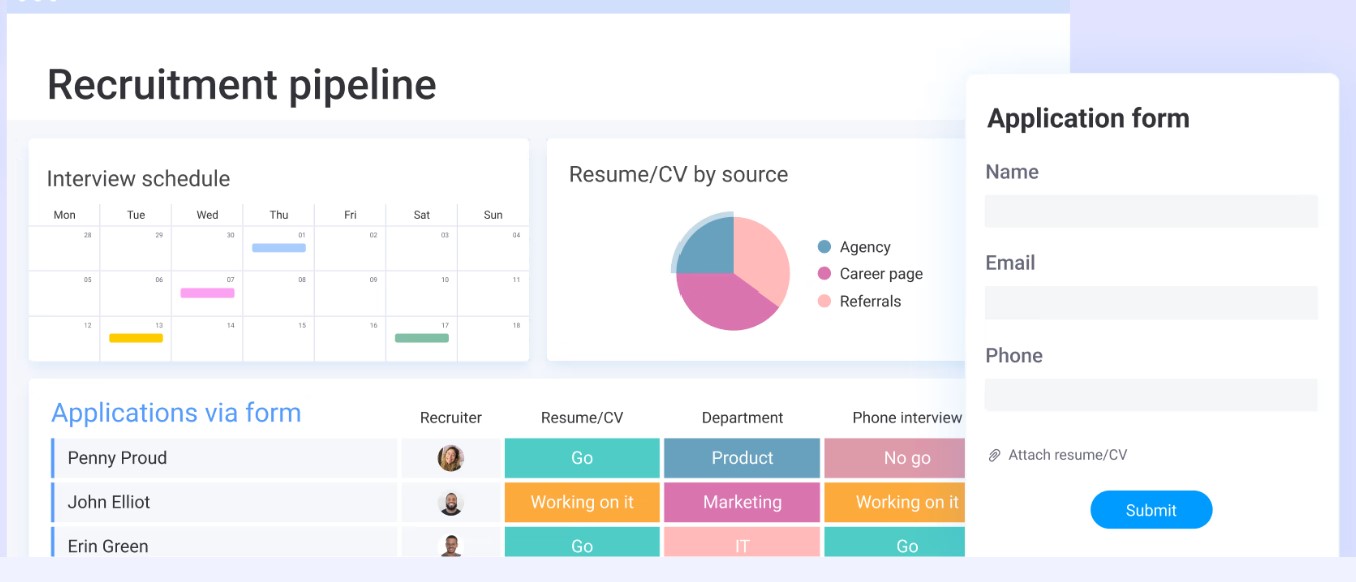
2. Material resources
Managing materials is all about the tangible resources your team needs to complete a task. That might include office essentials like ballpoint pens, event lanyards, mugs, laptops—any physical item that your team needs to use as part of a wider task.
If you’ve got a pretty big project, you might find it challenging to track dozens of items on a spreadsheet. That’s where a Work OS (Work Operating System) like staging-mondaycomblog.kinsta.cloud comes in handy.
Our Map Views enable everybody to see precise material locations and share labels for different material types on your workflow templates. You can also choose from Gantt, Kanban, Calendar, and Dashboard views to instantly see a resource status at any given moment.
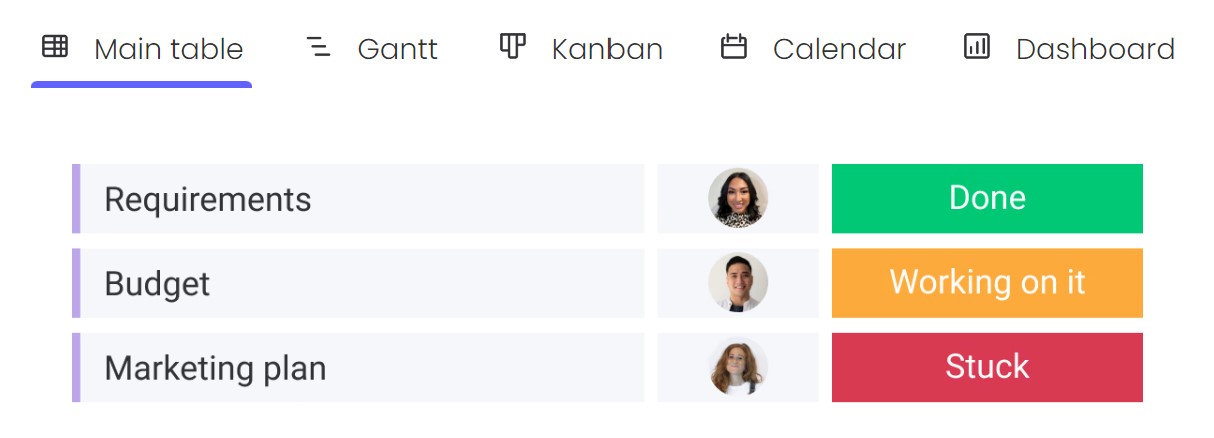
3. Relationship resources
When resource managers talk about relationship management, they’re specifically talking about professional working relationships with vendors, contractors, and subcontractors.
You can use staging-mondaycomblog.kinsta.cloud to collaborate with a number of external clients and vendors, share forms, and enable limited secure access to particular elements of a workflow.
We’ve even got a Vendor List template that can help you track and manage your master list of everyone you conduct business with.
What are the benefits of resource management?
Resource management might sound like an extra step in an already long project process — but it’s absolutely critical if you want to optimize and best utilize your assets.
And there are a few other benefits you’ll receive if you invest upfront in resource management:
Resource management helps you avoid unforeseen hiccups
59% of professional services companies consider the “inability to predict project resource needs” as a top business challenge. But by taking the time to develo a firm understanding of what you have and how to put it to use, you’ll forecast any potential problems before they arise. Expect to save yourself and your team major headaches along the way.
Resource management minimizes team burnout
Effective resource management means you’ll avoid over-allocating resources, which would otherwise stifle your team’s productivity.
Resource management ensures everybody on your team has exactly what they need, exactly when they need it. This is crucial to workplace satisfaction, especially when you have team members juggling multiple projects.For example, project management software like the staging-mondaycomblog.kinsta.cloud Work OS provides a clear view of everyone’s workload. You can check capacity at a glance to easily understand who can take more further tasks, and who is already overloaded.

Resource management offers a safety net if things head south
Let’s say your project doesn’t hit your goals due to a lack of resources. It happens. But, if you can demonstrate you planned and managed your resources appropriately, your stakeholders will know you did everything possible with your available assets, reaffirming their trust in you.
Resource management builds efficiency
Managing your resources and keeping tabs on allocation allows you to better understand how your team consumes resources. That data will enable accurate planning for your next project.
Take control of your project with staging-mondaycomblog.kinsta.cloud's resource management template
The staging-mondaycomblog.kinsta.cloud Work OS features a unique Resource Management template that allows you to plan your asset allocation with precision. We help you put all your resources front and center so you can see what’s used, how long for, and who’s responsible in real-time.
In addition to over 27 workflow views, Like Gantt Views and Kanban Views, you’ll also benefit from:
- Excel export and import function to instantly export your template to Excel with just one click. On the flip side, you can easily import your Excel spreadsheet and turn it into a sleek staging-mondaycomblog.kinsta.cloud board.
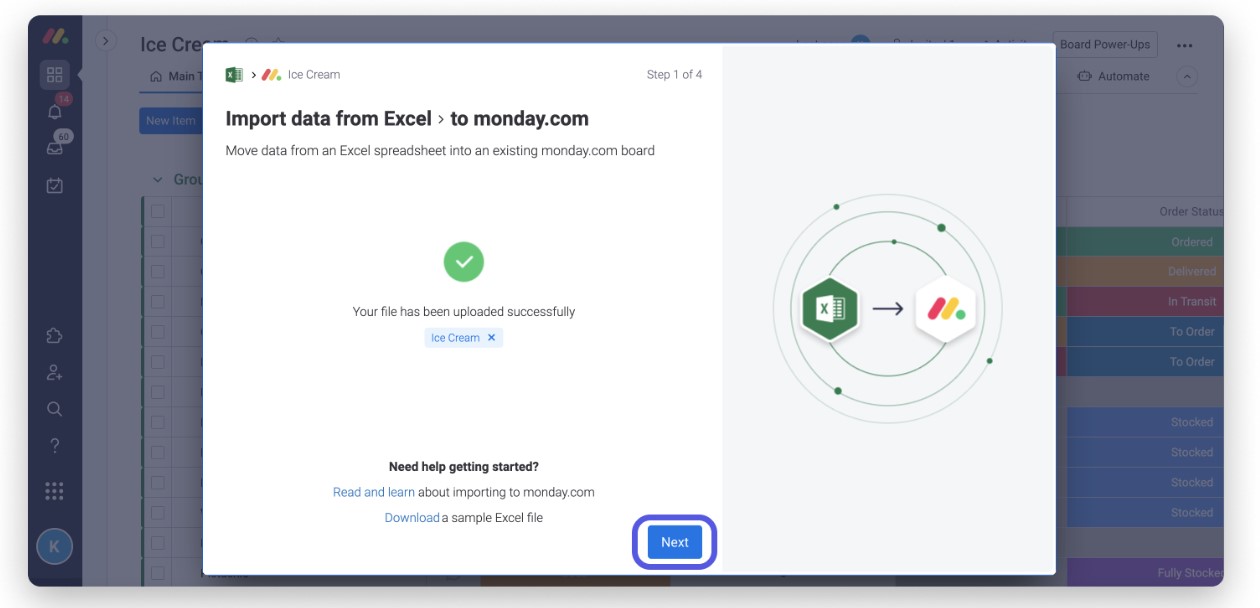
- Map views providing clear asset locations on a map. Everyone will always know exactly where to find a resource.

- Resource-centric displays providing the precise status of the resource as a snapshot so you don’t have to try and track stuff down through complicated file paths. You’ll also receive an at-a-glance project overview.
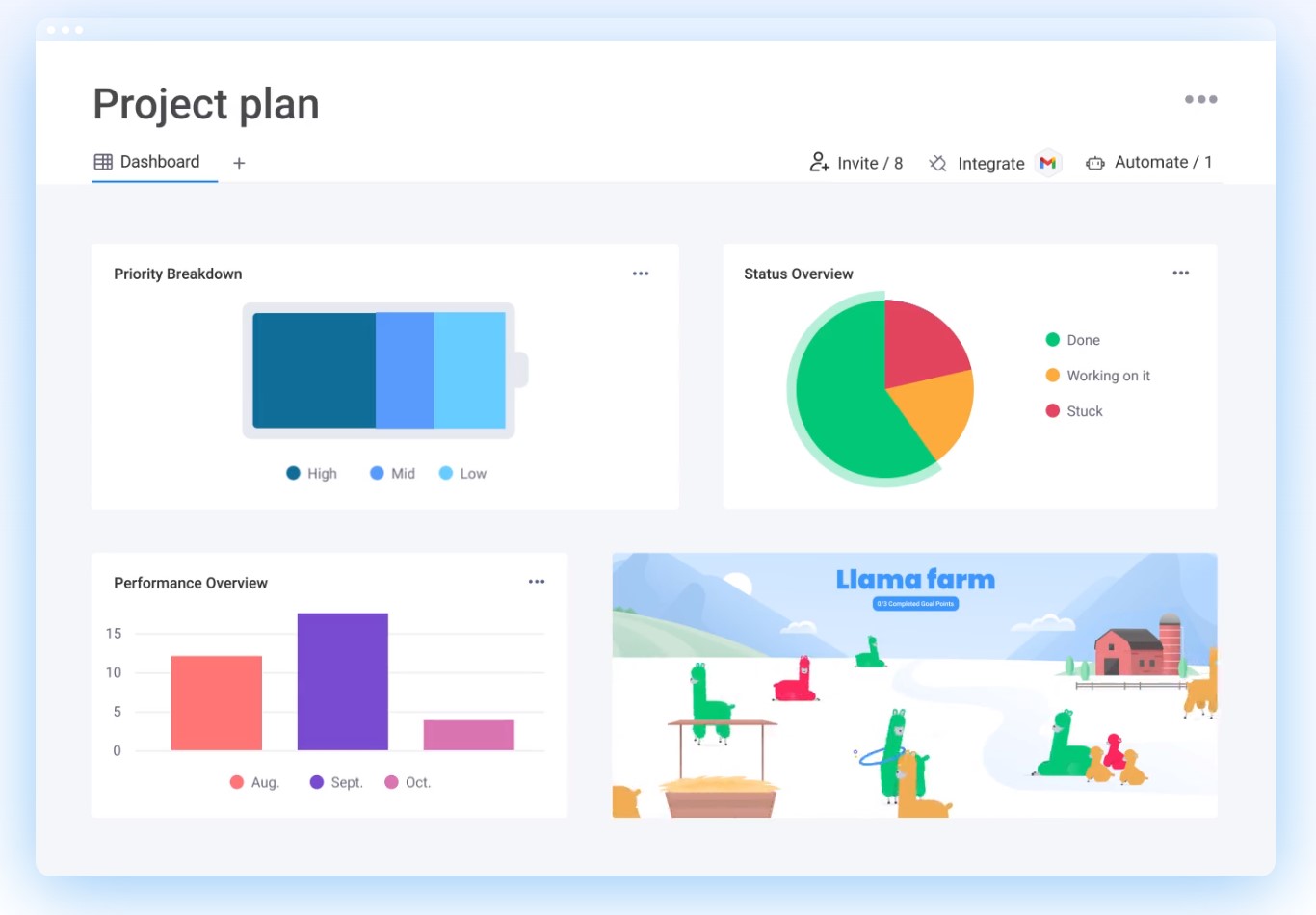
- Financial overview displays that make it a cinch to track and manage project budgets.
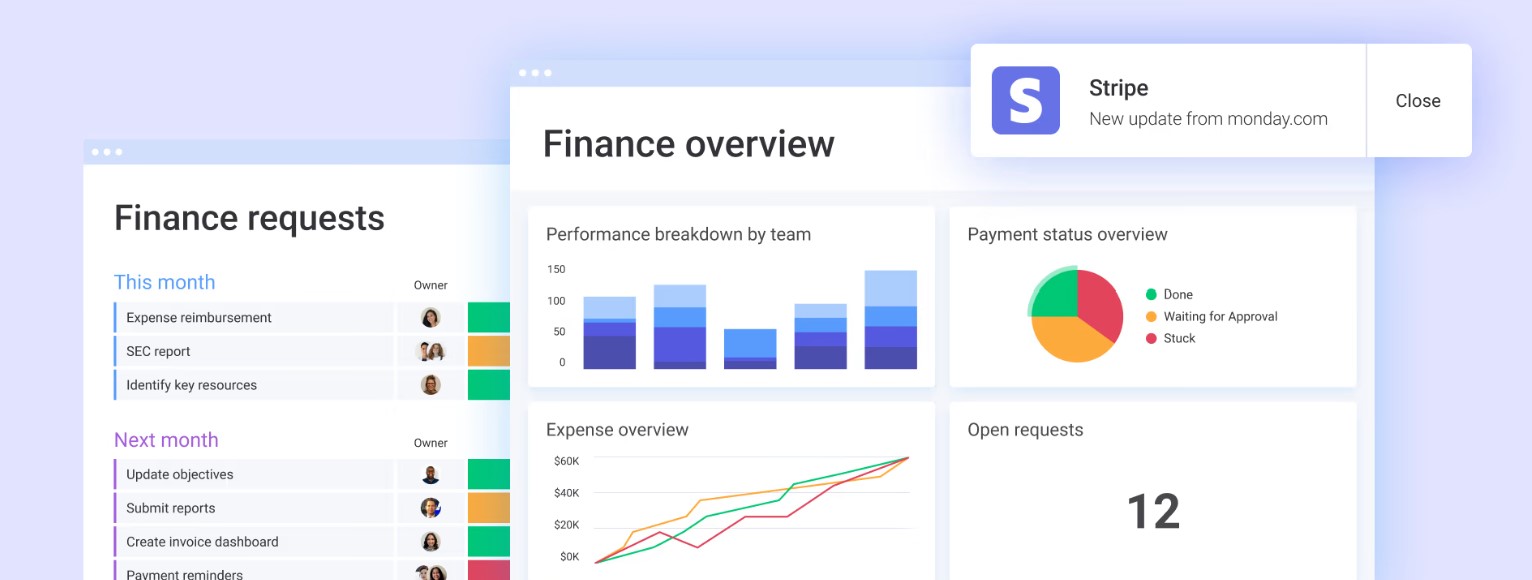
Sounds pretty great, right? We think so, too. But don’t take our word for it. Try it free now.
FAQs
What’s the first step in resource management?
Get started by selecting a project to work on, and determine the essential resources you need to focus on. For example, budget, materials, technology, and personnel.
What are some resource management examples?
Some examples of resource management include:
- Financial: is the project within budget and is there enough wiggle room for unexpected expenses?
- Staffing: do you have the right team members to execute this project and do they have the necessary skills?
- Premises: do you have enough available space for your project and are you using it appropriately?
- Technology: do you have the right tech tools in place and are they up to date?
What is human resource management?
Human resource management relates to your greatest business asset — your people. This type of resource management involves attracting, engaging, and retaining talented employees, training and developing them to reach their full potential, and motivating them to perform at their best. Leaders must ensure they support their human resources by equipping them with the tools and processes they need to succeed.
Kickstart resource management planning with staging-mondaycomblog.kinsta.cloud
The bottom line: resource management is a critical component of project management. You can avoid all sorts of unforeseen problems by planning, scheduling and allocating your resources upfront.
The great news is that the staging-mondaycomblog.kinsta.cloud Work OS, equipped with a specific Resource Management Template, allows you to expertly plot out your asset allocation. Learn more about effective Project management methodologies and sign up for a free staging-mondaycomblog.kinsta.cloud trial today.
 Get started
Get started


